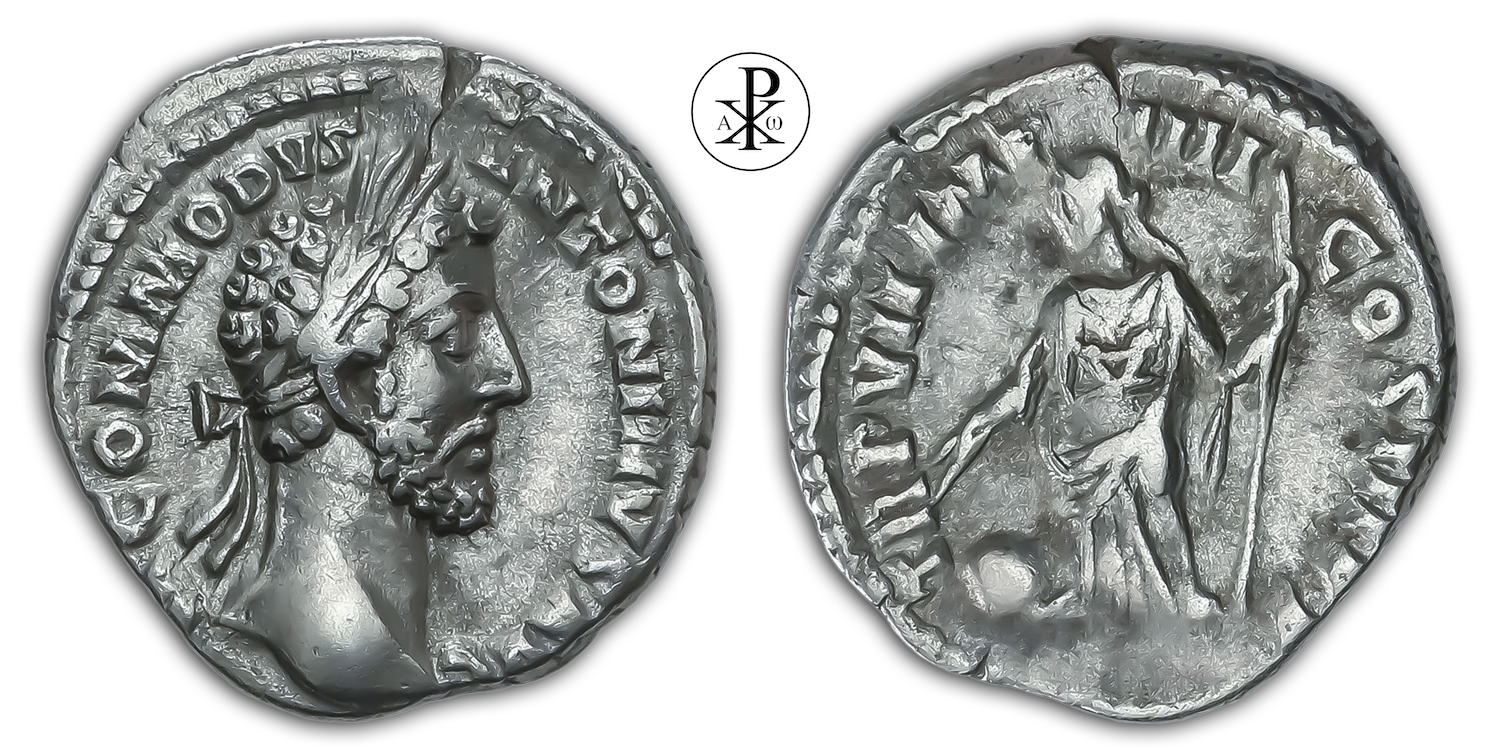Imperator Caesar Marcus Aurelius Commodus Antoninus Augustus
Reign: Commodus
Mint: Rome
Date: 181/182 AD
Nominal: Denarius
Material: Silver
Diameter: 18mm
Weight: 3.36g
Reference: RIC III Commodus 32
OCRE Online: http://numismatics.org/ocre/id/ric.3.com.32
Rare: R1
Provenance: Soler y Llach Numismaticas Barcelona, Spain (Auction 1130, Lot 2200)
Pedigree: –
Obverse: Head of Commodus, laureate, right
Inscription: M COMMODVS ANTONINVS AVG
Translation: Marcus Commodus Antoninus Augustus
Reverse: Providentia, draped, standing left, holding wand in right hand over globe, set on ground, and sceptre in left hand
Inscription: TR P VII IMP IIII COS III P P
Translation: Tribunicia Potestate Septima, Imperator Quartum, Consul Tertium, Pater Patriae
Translation: Holder of tribunician power for the seventh time, Imperator for the fourth time, consul for the third time, father of the nation
Comment: Providentia was a Roman goddess known only from inscriptions or coins in two meanings. As a female figure, she was depicted on the reverse of Roman coins with a sceptre and a staff pointing to the earth. She is the embodiment of divine providence above the emperor and of the care of the ruler or emperor for Rome and for the Romans. Thus, she was the personification of foresighted care or providence and above all of the wise – but in principle nameless – statesman. Similar to Concordia or Fides, it became a generally revered divine principle early on because of its importance for the commonwealth. Providentia, which is attributed to individual persons, first appeared in Rome with Augustus and since then has belonged to the virtues of emperors in the ruler’s cult, like virtus, clementia, iustitia and pietas. In the Iulian-Claudian imperial dynasty, Providentia had a very dynastic character, so that the care for the imperial family was aligned with that of the state. As a result of an image on coins of Tiberius, we know of the existence of an ara Providentiae Augusti (altar of imperial care). It was only under the Flavian emperors that providentia was understood as care for all the needs of the citizens. Subsequently, Providentia increasingly appeared as the supreme imperial virtue, which was regarded as the basis of world order. Accordingly, it is frequently found in the emperors‘ propaganda rhetoric.
This Providentia denarius of Commodus can be dated between 10.12.181 AD (TR P VII) and the fifth imperial title (IMP V), which the emperor assumed in the course of 182 AD (here on this presented denarius still IMP IIII). Maria Regina Kaiser-Raiß sees the extensive Providentia deorum issues on denarii, sestertii, dupondi and aces (as well as the Liberalitas V and Salus coinages of this period) in connection with the foiled Lucilla conspiracy. The Providentia deorum of Commodus (influence of the gods on the lives of men) at the end of 181 AD was the concrete manifestation of divine providence that prevented the conspiracy and the assassination of the emperor. The plot itself may have taken place as early as 181 AD, presumably at the earliest possible moment after Commodus‘ arrival in the capital. Augusta Lucilla had at least one son, whose father was Lucius Verus and who may already have worn the toga virillis in 181 AD. In terms of nobilitas, he was in no way inferior to Commodus as a potential successor. This may have been a motive of the conspirators. The young Claudius Pompeianus Quintianus (cf. also Amm. Marc. XXIX 1, 17) was entrusted with the execution of the assassination (probably a stepson of Lucilla from her husband’s first marriage to a Quintia). The latter confronted the emperor at the entrance to the theatre with drawn sword and shouted: this is sent to you by the senate. But he did not carry out the killing stroke himself; he was bound and executed. Lucilla and Quadratus, the authors of the assassination attempt, and, as it seems, a Norbana, a Norbanus, a Paralius and his mother (Comm. 4, 4. Dio LXXII 4, 5-6. Herod. I 8, 4-5) were also killed soon afterwards.
